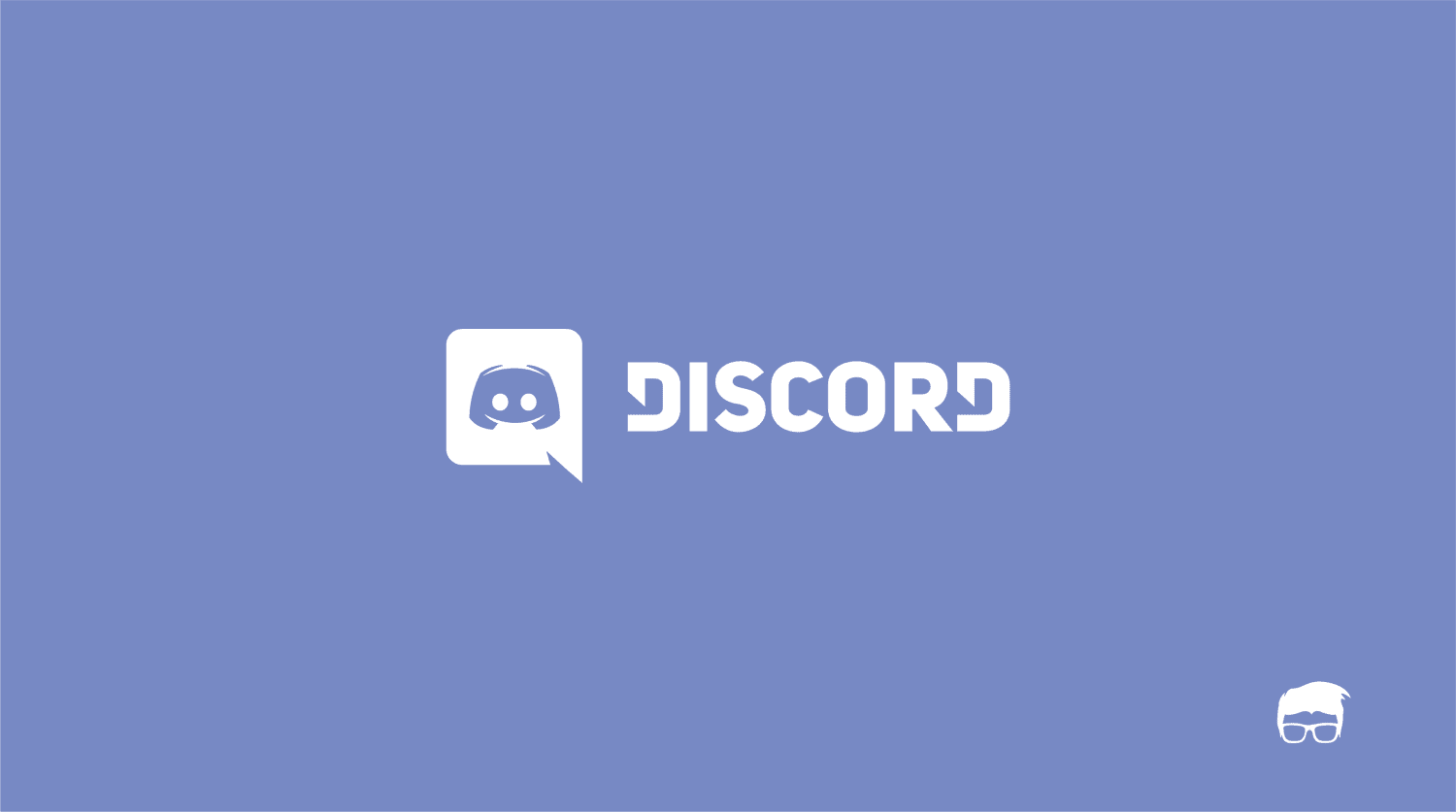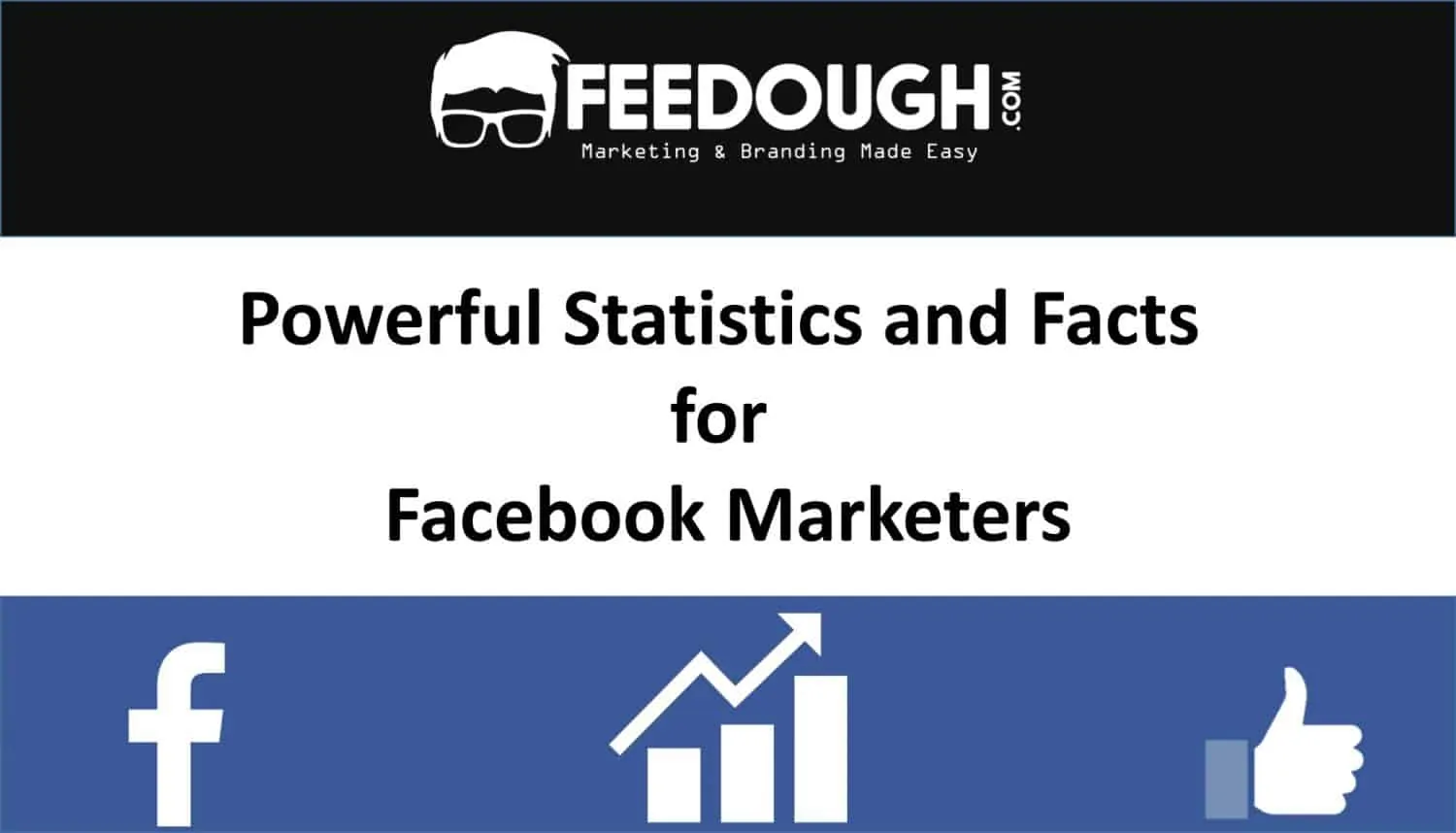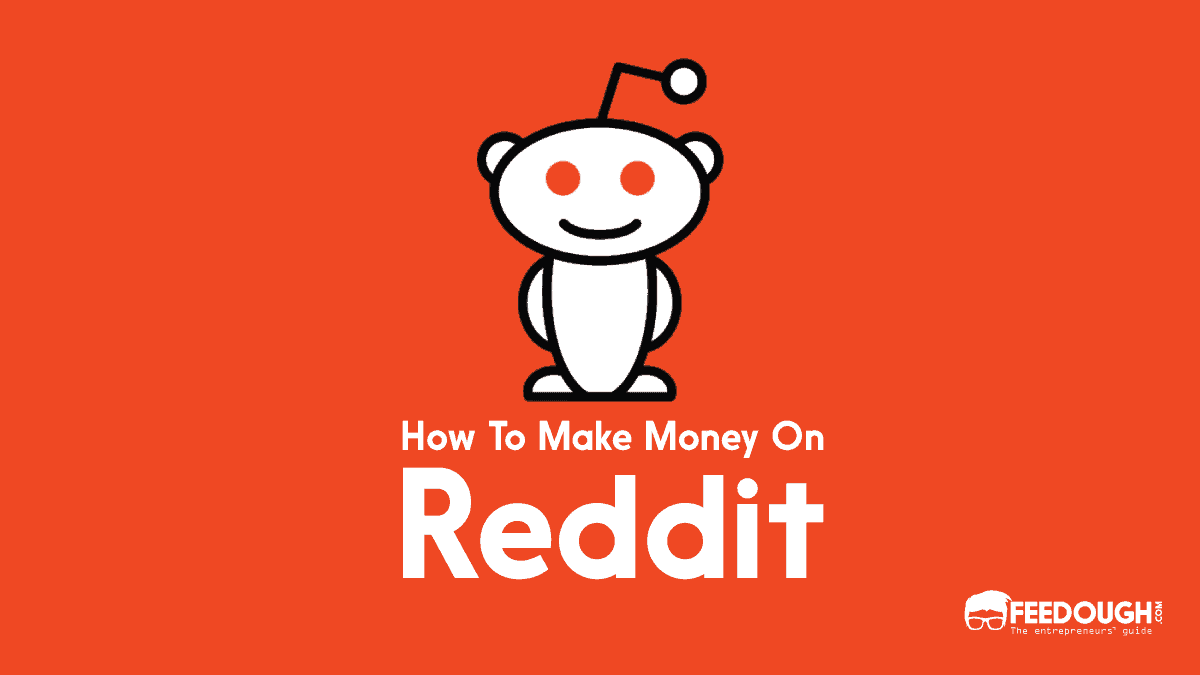Discord has quietly become one of the most powerful social platforms on the internet, and the numbers are honestly pretty mind-blowing.
What started as a simple tool for gaming communities has transformed into a digital hub where millions of people build everything from business networks to study groups to creative collectives.
We’re talking about a platform that now boasts 259.2 million monthly active users with 13.83% growth, numbers that put it in serious competition with social media giants you’d expect to dominate those charts.
Throughout this article, you’ll discover the key statistics that reveal Discord’s true market position, user behaviour patterns that might surprise you, and growth trends that could reshape how we think about digital communities.
Let’s dig into what the data actually shows.
Key Statistics
Here are the numbers that tell Discord’s growth story:
- 259.2 million monthly active users with 13.83% year-over-year growth
- 31.5 million daily active users, up 8.62% from 29 million the previous year
- 689 million total registered users expected by the end of 2025
- $561 million in total revenue with impressive 29.2% year-over-year growth
- 7.3 million Discord Nitro subscribers, representing 17% growth year-over-year
- 28.4 million total servers, with gaming communities making up 74% of all servers
- 12 million active bots helping automate and enhance server functionality
- 94 minutes average daily usage among gaming users specifically
- 43.68% of users aged 18-24, showing Discord’s appeal to younger demographics
These numbers paint a picture of a platform that’s not just surviving but thriving. The consistent double-digit growth across users, revenue, and engagement shows Discord has cracked the code on building sticky communities. What’s particularly telling is that the daily engagement rate of about 12%, meaning roughly one in eight monthly users shows up every single day.
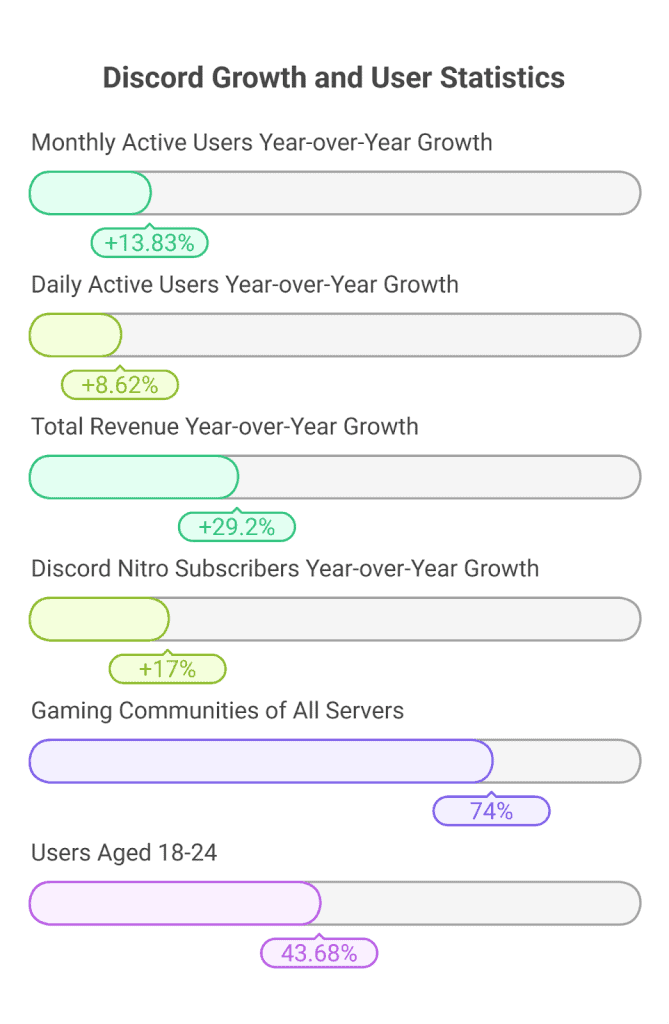
User Growth and Platform Statistics
The numbers tell a story of sustained momentum that even surprised Discord’s own team. Here’s what the platform’s growth trajectory looks like:
- 259.2 million monthly active users in 2025, up from 227.7 million in 2024
- 31.5 million daily active users (8.62% increase from 29 million previous year)
- 689 million total registered users expected by end of 2025
- Daily to monthly active user ratio of approximately 12.15%
- The platform gained 25 million registered users within first year of launch
- Consistent double-digit growth rates maintained for past three years
- Strong user retention rates with majority of new users continuing regular engagement
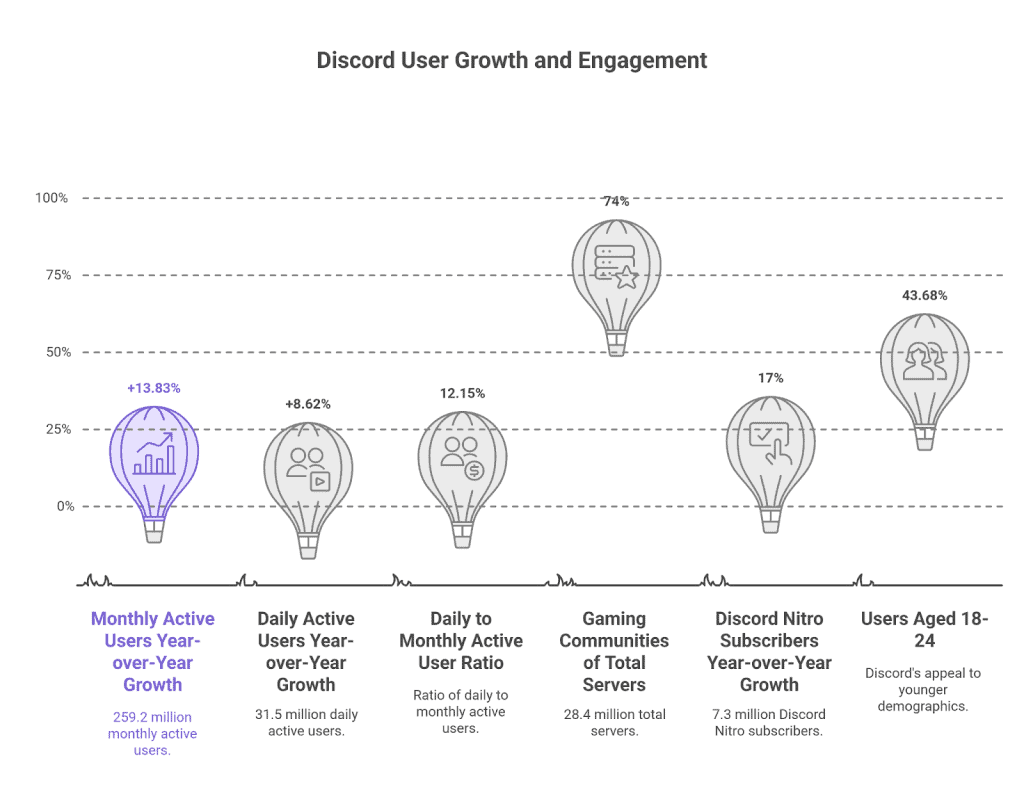
What’s interesting here is that daily-to-monthly ratio of 12.15%. You might think that sounds low, but it actually shows something healthy about Discord’s ecosystem. Unlike social media platforms where users scroll mindlessly throughout the day, Discord users tend to show up with purpose. Whether that’s for scheduled gaming sessions, community events, or focused conversations.
The retention story is where things get really compelling. Most platforms struggle to keep new users engaged past the first week, but Discord’s community-first approach creates natural stickiness. When someone joins a server that matches their interests, they’re not just using an app; they’re joining a group. That’s why the platform can maintain steady growth without the aggressive user acquisition tactics you see elsewhere.
This trajectory suggests Discord has found something sustainable. The growth isn’t explosive like a viral social app, but it’s consistent and built on genuine user value rather than algorithmic manipulation.
Demographics and User Behaviour
Discord’s user base reveals a fascinating story about digital community evolution. Here’s what the numbers tell us about who’s actually using the platform:
- 43.68% of Discord users are aged 18-24, making this the platform’s dominant demographic
- 35.49% of Discord’s web traffic comes from this same 18-24 age group
- 32.23% of users fall into the 25-34 bracket, showing strong millennial adoption
- 58% of Discord’s Gen Z audience in the U.S. uses the platform for non-gaming discussions weekly
- 93% of Discord users actively play games while using the platform
- Users engage in over 4 billion minutes of daily conversations across the platform
- Gaming users spend an average of 94 minutes daily on Discord
What’s really interesting here is the behavioural shift happening beneath these numbers. While gaming still dominates, 93% of users are actively gaming, and that 58% non-gaming usage among Gen Z shows Discord transcending its gaming roots. You’re seeing people use it for study groups, hobby communities, and even professional networking.
The age concentration tells another story. Nearly three-quarters of users fall between 18 and 34, which explains both the platform’s gaming focus and its rapid expansion into other areas. This demographic grew up gaming but also values authentic community spaces over traditional social media.
That 94-minute daily usage among gamers? It’s not just about playing games. People are building genuine relationships, discussing everything from career advice to creative projects. The platform’s evolution from gaming chat to digital community hub becomes clearer when you see how users actually spend their time there.
Revenue and Financial Performance
Here’s what Discord’s financial numbers tell us about their monetisation approach:
- $561 million total revenue in 2025 – representing a solid 29.2% year-over-year growth that shows the platform’s business model is gaining traction
- Discord Nitro subscriptions contributed approximately $450 million – making up roughly 80% of total revenue, proving their premium subscription strategy works
- 7.3 million Discord Nitro subscribers – up 17% year-over-year, showing steady conversion from free to paid users
- Mobile app purchases generated an estimated $123 million in 2024 – demonstrating strong mobile engagement beyond desktop usage
- Discord valued at $14.7 billion in their last major funding round (September 2021), reflecting investor confidence in their growth trajectory
- Nitro subscription pricing remains at $9.99/month or $99.99 annually – competitive pricing that hasn’t needed adjustment despite inflation
- Server boosting revenue contributes significantly – showing how community features drive additional monetisation
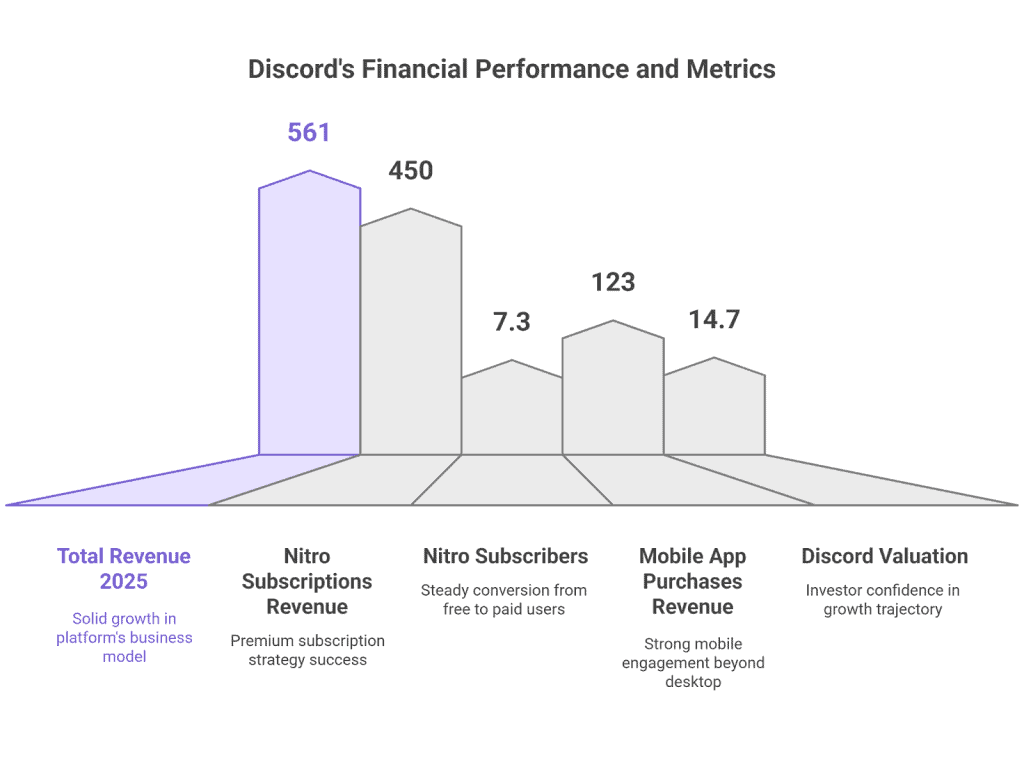
What’s fascinating here is how Discord cracked the code on subscription revenue where others failed. While most social platforms rely heavily on advertising, Discord built a business around what their users actually wanted – better features, not fewer ads. That young demographic we talked about earlier? They’re willing to pay for enhanced experiences rather than being sold to.
The fact that Nitro subscriptions make up 80% of their revenue shows this wasn’t just a lucky guess. Discord understood their community values privacy and ad-free experiences enough to open their wallets. Plus, with 7.3 million subscribers out of 259.2 million monthly users, there’s still massive room for conversion growth.
Server Activity and Engagement
The sheer scope of Discord’s server ecosystem reveals just how deeply the platform has embedded itself into digital community culture. These numbers paint a picture of a thriving social infrastructure:
- 28.4 million total servers operate on Discord as of 2025
- 74% of all servers (21 million) are dedicated to gaming communities
- 12 million active bots enhance functionality across public and private servers
- Midjourney leads all servers with 20.44 million members
- Marvel Rivals is top gaming server with 4.17 million members
- Genshin Impact Official ranks second among gaming servers with 2.10 million members
- 19 million servers are active weekly, showing consistent engagement patterns
What’s fascinating here is how Discord has evolved beyond its gaming roots while still honouring them. Gaming servers make up three-quarters of the platform, but that leaves 7.4 million servers dedicated to everything from art communities like Midjourney to educational groups and hobby clubs.
The bot ecosystem tells another story entirely. 12 million active bots means communities aren’t just chatting; they’re building sophisticated automated experiences that handle everything from moderation to custom games.
The scale of top servers like Midjourney’s 20+ million members creates network effects that smaller platforms can’t match. When Marvel Rivals launches and immediately builds a 4+ million member community, you’re seeing the power of Discord’s infrastructure to support massive, real-time conversations. These aren’t passive followers; they’re active participants in communities that stay engaged week after week.
Gaming Community Dominance
Discord’s gaming foundation remains unshakeable despite platform diversification efforts. The numbers tell a clear story of gaming’s continued grip on the platform:
- Gaming servers account for 74% of Discord’s total server ecosystem.
- 21 million active gaming communities operate on the platform.
- Gaming users spend 94 minutes daily on Discord on average.
- 93% of Discord users actively play games while using the platform.
- Marvel Rivals commands the largest gaming server with 4.17 million members.
- Gaming-related discussions generate the majority of Discord’s daily conversation volume.
- Esports communities represent significant portion of most active servers
Gaming’s dominance isn’t just about numbers; it’s about ecosystem lock-in. When you dive into these communities, you see why Discord became gaming infrastructure rather than just another chat app. Marvel Rivals’ 4.17 million-member server isn’t just a fan club; it’s where game strategies spread, tournaments are organised, and player feedback reaches developers.
The 94 minutes gamers spend daily on Discord creates sticky engagement that translates to Nitro subscriptions and server boosts. Plus, these gaming communities drive Discord’s revenue model. Dedicated gamers willingly pay for enhanced server features, better audio quality, and larger file uploads.
That’s exactly why Discord prioritises gaming features like noise suppression and low-latency voice chat, even as they expand into other markets.
Regional Distribution and Future Outlook
Discord’s global footprint reveals distinct patterns that signal where the platform’s next growth phase will unfold. Here’s how users are distributed across key regions:
- North American dominance: The United States anchors Discord’s user base with the highest concentration of active users.
- European stronghold: Europe and North America together account for the majority of Discord Nitro subscriptions, indicating strong monetisation in these markets.
- Asia-Pacific surge: This region shows the fastest growth in both user acquisition and new server creation.
- Gaming universality: Gaming communities lead usage across all major geographic markets.
- Language diversity: Non-English servers represent an expanding segment, with communities forming in dozens of languages.

The data points toward a platform positioned for significant international expansion. With 689 million total registered users projected by the end of 2025, Discord’s growth trajectory suggests the current 259.2 million monthly active users could nearly triple within two years. That 29.2% year-over-year revenue growth isn’t just a number; it reflects sustainable expansion patterns that typically accompany successful global scaling.
What’s particularly interesting is how Asia-Pacific’s rapid growth coincides with Discord’s evolution beyond pure gaming. While 74% of servers remain gaming-focused globally, the fastest-growing international markets are also driving non-gaming adoption.
This creates a dual opportunity: deeper penetration in established Western markets through feature diversification and geographic expansion into underserved regions where Discord’s community-first approach could fill gaps left by more restrictive platforms.
An ardent reader, full-time writer and a lover of all things purple. Riya is an entrepreneurial spirit, making her way in the start-up industry through her expressive writing. When not working, you can find her jamming to music, watching period films, eating sushi, or petting cats.

